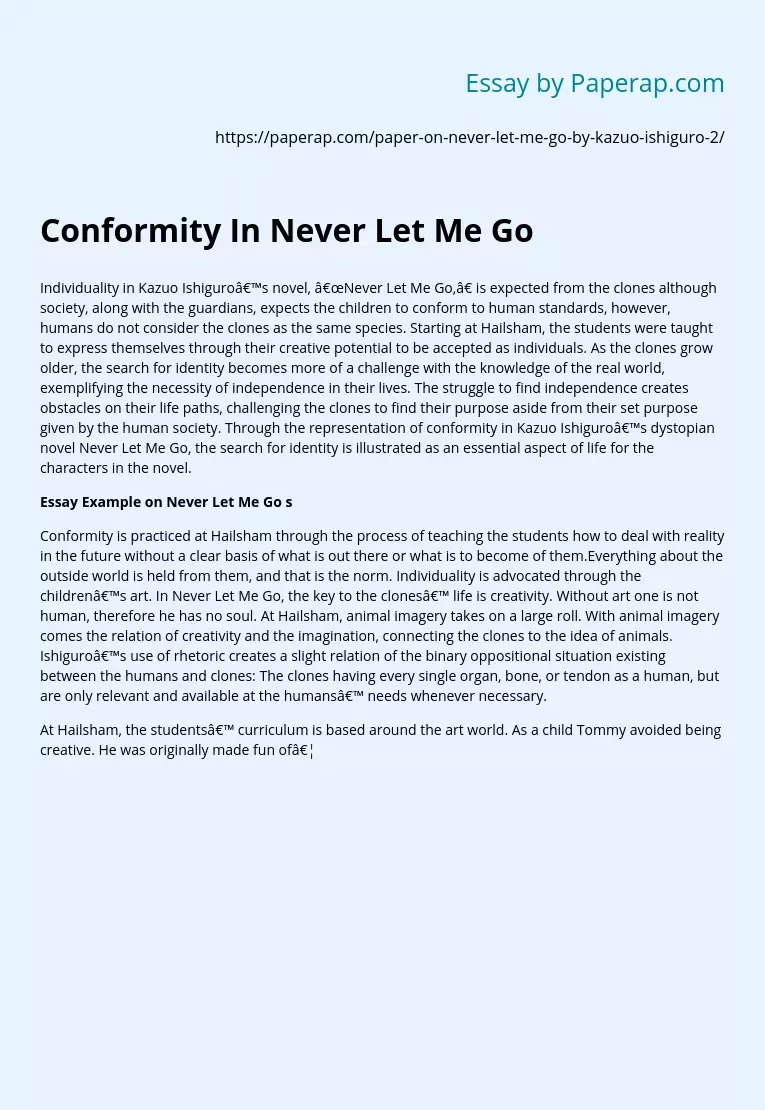Conformity In Never Let Me Go
Individuality in Kazuo Ishiguro’s novel, “Never Let Me Go,” is expected from the clones although society, along with the guardians, expects the children to conform to human standards, however, humans do not consider the clones as the same species. Starting at Hailsham, the students were taught to express themselves through their creative potential to be accepted as individuals. As the clones grow older, the search for identity becomes more of a challenge with the knowledge of the real world, exemplifying the necessity of independence in their lives.
The struggle to find independence creates obstacles on their life paths, challenging the clones to find their purpose aside from their set purpose given by the human society. Through the representation of conformity in Kazuo Ishiguro’s dystopian novel Never Let Me Go, the search for identity is illustrated as an essential aspect of life for the characters in the novel.
Essay Example on Never Let Me Go s
Conformity is practiced at Hailsham through the process of teaching the students how to deal with reality in the future without a clear basis of what is out there or what is to become of them.
Everything about the outside world is held from them, and that is the norm. Individuality is advocated through the children’s art. In Never Let Me Go, the key to the clones’ life is creativity. Without art one is not human, therefore he has no soul. At Hailsham, animal imagery takes on a large roll. With animal imagery comes the relation of creativity and the imagination, connecting the clones to the idea of animals.
Ishiguro’s use of rhetoric creates a slight relation of the binary oppositional situation existing between the humans and clones: The clones having every single organ, bone, or tendon as a human, but are only relevant and available at the humans’ needs whenever necessary.
At Hailsham, the students’ curriculum is based around the art world. As a child Tommy avoided being creative. He was originally made fun of…
Conformity In Never Let Me Go. (2019, Nov 27). Retrieved from https://paperap.com/paper-on-never-let-me-go-by-kazuo-ishiguro-2/

